#USS Keeling
Explore tagged Tumblr posts
Text

It wouldn't be until the day after the attack on Pearl Harbor that the fires on USS West Virginia (BB-48) were finally extinguished. Prompt counter-flooding kept her from capsizing and she settled to the harbor floor on an even keel.
59 notes
·
View notes
Text
so @darlingofdots's awesome Temeraire!universe historian post mentioned the wreck of the HMS Allegiance and I have been thinking about where it is literally all day.
Not just where as in "somewhere in the South Pacific" (because duh) but also, specifically, how deep, and therefore how the wreck would be studied.
Because a lot of archaeologically significant shipwrecks are pretty shallow, since they're the wrecks we can dive to, either on normal air scuba tanks or mixed gas. The Uluburun shipwreck off Turkey, for example, sits between 44 and 61 meters deep, which is right on the edge for air diving. The archaeologists could only be at the bottom for 20 ish minutes at a time, two times per day, with careful decompression timing as they went up to avoid the bends and not-insignificant amounts of nitrogen narcosis at the bottom. Mixed gas goes deeper, 100 meters or so for some of the more available ones. (there's a Phoenician shipwreck off the coast of Malta that's about 110 meters deep, and was excavated by technical divers) Beyond that it's just commercial divers laying oil pipelines with the super $$$ gas at depths of up to 500 meters or so. Anything deeper than that is the domain of submarines and robots.
and really, all of that ^ paragraph is just tangential set dressing that I added because I like shipwreck archaeology, because knowing the Allegiance went down in the middle of the South Pacific meant it was always going to a be a submarines-and-robots wreck. The middle of the Pacific Ocean is uh. deep. but I wanted to find out exactly how deep.
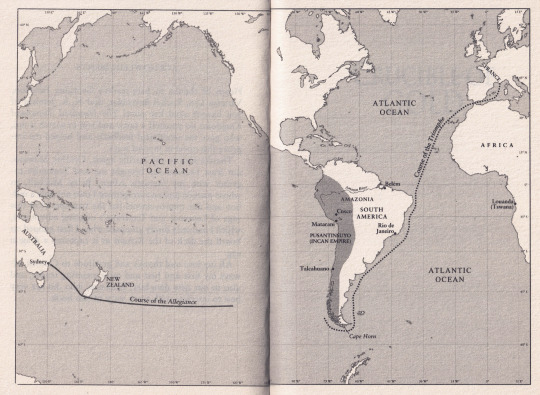
so the map from Crucible of Gold puts the sinking at a little under 50°S and a little over 121°W, which the NOAA bathymetric data viewer says is just about 3000 meters deep

Since that's an extremely boring screenshot, here's the CoG map overlayed on a bathymetric map:

It's actually on a bit of a ridge there! which is why it's at 3000 meters and not deeper.
We do find and investigate wrecks at that depth and deeper these days. The Titanic is at 3800 meters, and it has been investigated extensively (though we also have a recent pretty major news story about why thats still difficult and uh, very dangerous) The USS Samuel B Roberts was found at 6895 meters, and perhaps most relevantly, the search for Malaysa airlines flight MH370 turned up two 19th century shipwrecks at 3500+ meters deep, over 2000 kilometers off the coast of Australia.
One of those wrecks was a wooden ship from either the 1870s or 1880s, and though, being wood, it was pretty badly decayed, its cargo (coal) and metal features (anchor and water tanks) were still extant. On the Allegiance, that would also include her guns and her metal keel (which would probably be the identifying feature TBH, the keel marking her as definitely a dragon transport)
That wreck is probably the best parallel to the Allegiance in other ways, being a wooden sailing ship with a wreck not only very deep but also very remote. It also probably went down due to an explosion, just like the Allegiance. They were common on coal-carrying vessels, and the sonar images showed the cargo was scattered across the seafloor like something catastrophic happened.
The Allegiance would be more remote than its real-world parallel, but anyone looking for it would be hunting for it specifically and would be armed with probably a decent idea of where she was when she went down, seeing as there were survivors who would have been very keen to remember where they were so they could know how close they were to land. Plus, much like the Titanic (though not to the same extent) there'd probably be funding to investigate the Allegiance once found, as she had a part to play in major political turning points on at least three continents. People tend to be interested enough to throw money at that sort of thing.
So, there you have it. It would take a pretty serious effort to find her, though not an impossible one, and once found she'd be investigated by shipwreck robots, which would bring back pictures and samples of her metal remains, with organic matter being mostly absent by the time she was found.
#temeraire#shipwreck archaeology#thank you darlingofdots for the excuse to go down this rabbit hole#you are so correct that in-universe historians would be SO excited for this wreck to be found
91 notes
·
View notes
Text
Starfleet Training Video "Make TMP Work for You", 2274.
The complete overheal of almost every starship system by the Total Modification Programme (TMP) required extensive retraining but resulted in a more streamlined, unified fleet. T.M.P. emerged out of the Advanced Starship Design Bureau in the mid 2260s in the wake of the Linear Warp Drive breakthrough. With a revolution in engine design on the cards, Starfleet designers were concerned about how long - and how effective - a rapid retrofitting of Starfleet's roster would be.
With other breakthroughs like multitronic computers, neo-optical interfaces and semi-conventional power transmissions clearly coming soon, the ASDB began to formulate a new design ethic that integrated all of these new technologies together, allowing for a unified set of equipment that could marry it all together.
The first of the new type of ships - USS Accra - launched in 2268 and served as clear proof that the principles of unified design worked. The most radical experiment ASDB conducted, however, would be the first TMP - conducted on the USS Enterprise between 2270 and 2273. The line starship would be rebuilt from the keel up with the most advanced equipment available in record time, even accounting for it's emergency re-launch during the V'Ger crisis.
TMP would prove to be the most successful engineering iniative of the 23rd century; over 70% of Starfleet's roster would be retrofitted to it's standards by 2285, when the programme finally ended.
64 notes
·
View notes
Text

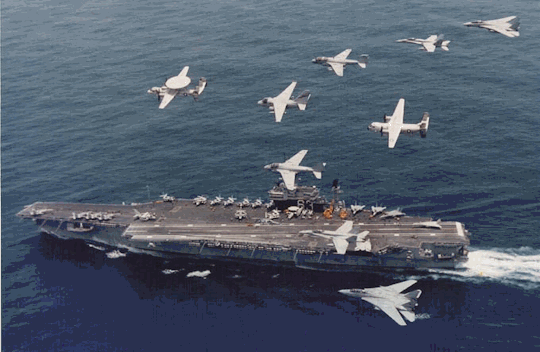
CVA 63 USS Kitty Hawk
Initially commissioned as attack aircraft carrier CVA 63, she was redesignated as multi-purpose aircraft carrier CV 63 April 29, 1973.
Keel Laid: December 27, 1956 Launched: May 21,1960
Commissioned: April 29, 1961 Decommissioned: May 12, 2009
78 notes
·
View notes
Text

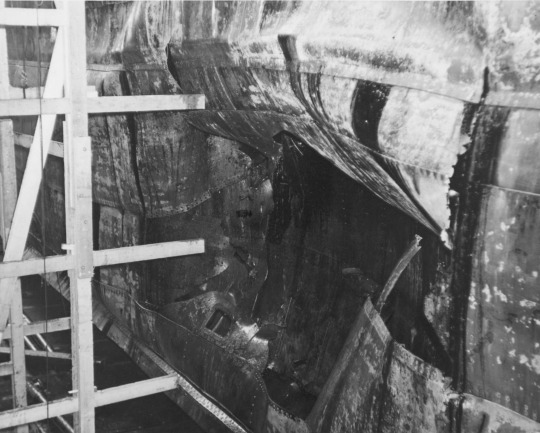
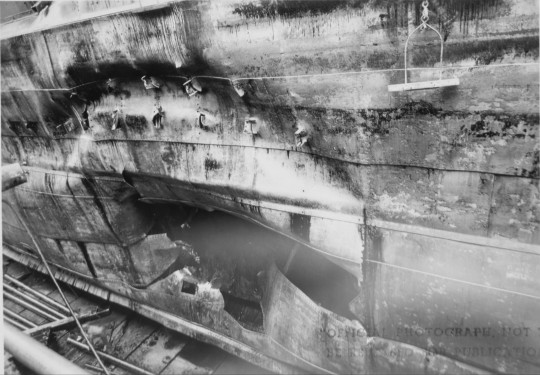
View of torpedo damage to USS SARATOGA (CV-3), while in dry dock at Pearl Harbor. Her hull was given a temporary patch for her trip to Puget Sound Navy Yard for permanent repairs.
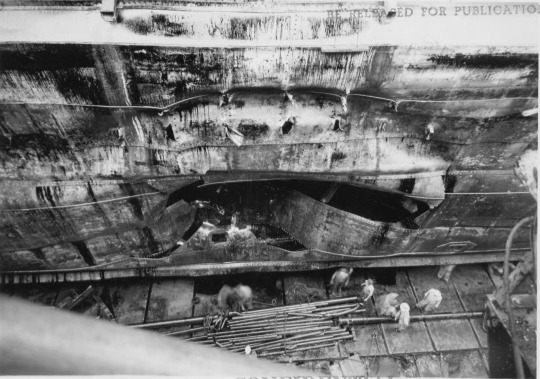
SARATOGA was about 420 nautical miles (780 km; 480 mi) southwest of Pearl Harbor, when she was hit by a torpedo fired by I-6. The explosion flooded three boiler rooms and killed 6 crewmen. Her crew was able to close off those areas and reduce the ship's list. Her speed was reduced to 16 knots and she returned to Pearl Harbor two days later.



Note how the bottom plating below the bilge keel was forced out by the explosion


Diagrams of the damaged areas from the Damage Report: link
Admiral Furlong Collection
Date: January 16, 1942
Digital Archives of Hawai'i: PPFUR-3-13-006, PPFUR-3-13-001, PPFUR-3-13-008, PPFUR-3-13-007, PPFUR-3-13-004, PPFUR-3-13-003, PPFUR-3-13-002
#USS SARATOGA (CV-3)#USS SARATOGA#Lexington Class#Aircraft Carrier#Carrier#Warship#Ship#United States Navy#U.S. Navy#US Navy#USN#Navy#dry dock#drydock#World War II#World War 2#WWII#WW2#WWII History#History#Military History#Puget Sound Navy Yard#Puget Sound#Washington#West Coast#January#1942#my post
34 notes
·
View notes
Text
PR6 - Kearsarge


Ok, don't laugh.
I can't find any good 'accurate' angel iconography right now - at least nothing that matches what I see in Kearsarge, but her design is very angelic. In the literal sense, unlike Plymmouth and Brest; who have divine elements in their design, but are not angels. No, Kearsarge is something else. Not angelic, but a proper angel.

However, she is not a normal angel. No, far from it.
According to the lore (that I can remember right now, meaning I'm probably getting something wrong), Priority Research ships are pulled in their entirety from different realities. The process of building them is similar to 'blueprint ships'. A blueprint ship, according to Kirov in her debut event Northern Overture, is a ship that didn't quite exist in our reality, but still had enough planned components to qualify as being somewhat real - Brünhilde, Sovetsky Soyuz, Tosa, Prinz Heinrich, those ships that didn't exist but we can acquire through the gacha are blueprint ships.
Priority Research ships take this concept and run with it until the very end - by getting ships Wargaming has designed for World of Warships, but that's the meta out-of-universe explanation. In-universe, they are ships that, in some cases, weren't even planned to begin with. Roon is the best example, in my opinion - and by extension Hindenburg as well, I believe. Roon wasn't planned at any point during WW2. There were some designs, to the best of my knowledge, about a potential triple 203mm turret, but that's the whole extent.
On the opposite side, you have Ibuki. Ibuki was being built in real life, as a heavy cruiser in fact, but they started converting her to a seaplane tender before WW2 ended, and they never finished her.
USS Kearsarge is the name Wargaming chose for an insane design by Gibbs & Cox - Project 1058.1, of a hybrid battleship commissioned by the USSR. As Kearsarge herself says in her introduction, let's refer to this as Hybrid Idealization X. Designed from the keel up to be a pure hybrid BB, unlike the Japanese hybrids. This design, however, was never properly built. A good read about this 'Project X' hybrid is this article by Wargaming themselves: Kearsarge — The Legacy of Ship “X”
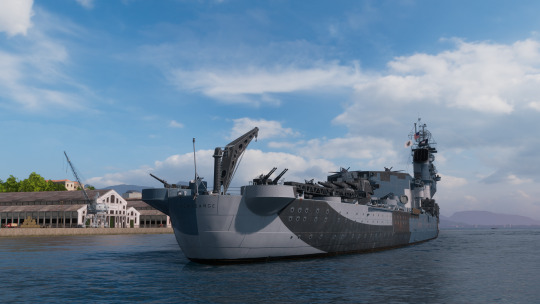
USS Kearsarge
How does all of this relate to Azur Lane and why her design is so angel-like?
The way I interpret the game mechanics and lore we know, is that PRs are from another universe entirely. My interpretation is that we don't get the other universe's version of, say, Chkalov; but an interpretation of her.
This is my headcanon: Kearsarge, in her original reality, is an attempt at creating an angel. I suspect she comes from either Anchorage's reality (based on how similar their design philosophies are, as if Anchorage were a little cherub, explaining her infant-like personality), or the reality we visit in Yorktown's II event. Maybe they are the same. Maybe one of the realities is an alternate universe of the other one, making them related.

Kearsarge has a sort of halo device that acts as a sort of physical interface between her and her rigging. She is literally hooked up to her halo, and her halo is in turn connected to her own rigging.
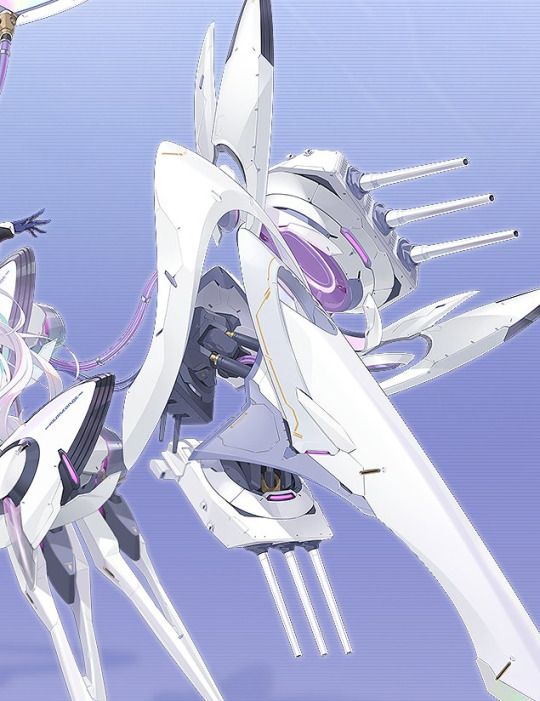
Her rigging, while only having two 'wings', is designed in such a way to appear as if she has more than two wings. Like a seraph, she gives the impression of having six wings.
I don't really have a conclusion. This is reaching, but this is what brainrot does to you.
--
--
Anyway. I want Kearsarge right fucking now.
#azur lane#priority research#uss kearsarge#new brainrot#holy shit she's so precious i can't contain my thoughts i have to share them with y'all
71 notes
·
View notes
Text

Launched: 30 April 1983 - USS Olympia (SSN-717) is a Los Angeles-class submarine of the United States Navy. Olympia is the second ship of the U.S. Navy to be named for Olympia, Washington.
The contract to build her was awarded to Newport News Shipbuilding and Dry Dock Company in Newport News, Virginia on 15 September 1977 and her keel was laid down on 31 March 1981. She was launched on 30 April 1983 sponsored by Mrs. Dorothy Williams, and commissioned on 17 November 1984, with Captain William Hughes in command.
In 1998, Olympia became the first Pacific-based submarine to pass through the Suez Canal in over 35 years.
When USS Bremerton (SSN-698) was decommissioned in August 2018, Olympia became the oldest commissioned submarine in the US fleet. Keeping with a tradition that dates back to World War II, Richard O'Kane's cribbage board was transferred from Bremerton to Olympia's wardroom. When she transferred to Puget Sound Naval Shipyard for decommissioning on 29 October 2019, USS Chicago (SSN-721) became the oldest active Fast Attack submarine in the fleet. The O'Kane Board now resides in her wardroom.
Olympia arrived in Bremerton, WA, on Thursday, October 31, 2019, for decommissioning after completing a final circumnavigation. Like all other recent U.S. submarines, the vessel will be recycled via the Navy's Ship-Submarine Recycling Program.
Photo: Olympia (SSN-717) slides down the ways into the water during launching ceremonies. Balloons are released in the foreground, 30 April 1983.
39 notes
·
View notes
Text

ASecond World War-era US Navy submarine has been found almost 80 years after its sinking at the hands of Japanese forces, researchers have announced.
The wreck of the USS Harder, a nearly 100-metre-long sub, was found off the Philippines' northern island of Luzon using data from Tim Taylor, an ocean explorer and founder of the Lost 52 Project, a mission to research the 52 US Navy submarines lost in World War Two.
The Harder had been sunk by a depth charge attack in August 1944 while fighting Japanese ships in Dasol Bay in the Philippines - which claimed the lives of all 79 crewmen on board.
American forces had formally declared the sub lost in January 1945, but now, the US Naval History and Heritage Command (NHHC) has confirmed the vessel's final resting place.
The NHHC the submarine was "resting at a depth of more than 3,000 feet", adding that it "sits upright on her keel relatively intact except for the depth-charge damage aft of the conning tower".
It praised the Project for its findings, saying: "Submarines by their very design can be a challenge to identify, but the excellent state of preservation of the site and the quality of the data collected by Lost 52 allowed for NHHC to confirm the identity of the wreck as Harder."
Its director, Samuel Cox, said: "Harder was lost in the course of victory, and victory has a price, as does freedom - and we must not forget.
"We are grateful that Tim Taylor and his Lost 52 team have given us the opportunity to once again honor the valor of the crew of 'Hit 'em HARDER', the submarine that sank the most Japanese warships in particularly audacious attacks under her legendary skipper, Commander Sam Dealey."
6 notes
·
View notes
Text

"As the bottle of champagne slipped from Mrs. Wilson's hand and smashed into the bow of the cruiser, and the keel fell into the bay, the CSS Tuscaloosa, first of the 2 modified Kuma class the CSN crash built to offset losses in the Great War, though they would not see service in that conflict was commissioned. The Tuscaloosa would be a common sight in the Caribbean, doing patrols and exercises with friendly nations, and would sail in both the Atlantic and Pacific at sundry times in the interwar period. In the Second Yankee War, she was on station in Havana and sent out to interdict Northern warships. The Tuscaloosa was sunk on patrol off the Outer Banks by the USS Hagfish on Oct 5th 1942."
taken from The Complete Register of CSN Ships 1900-1960 by the Duke University Press
3 notes
·
View notes
Text

February 9, 1942: The French ocean liner Normandie, docked beside pier 88 in Manhattan, NYC, catches fire while being converted into the troopship USS Lafayette. A pile of highly flammable kapok life preservers were improperly stored near a working acetylene torch in the ship's grand salon, and a stray spark caused a blaze quickly got out of control. The ship's onboard telephone system had been disabled days prior along with most of the ship's advanced fire suppression system, and the sprinkler system was improperly activated at all of its control stations simultaneously, dropping the water pressure within it to useless levels. It took twelve minutes for the NY Fire Department to respond to the emergency, by which time the fire had been fanned by a strong wind to become an inferno sweeping through the Normandie's upper decks, and 2,000 Navy men and civilians working aboard were streaming out of the ship through a limited number of entry points, preventing firefighters from getting aboard the vessel. When they finally could get aboard, they found their hoses incompatible with the firefighting inlets on the French ship, meaning they could only fight the fire from outside the ship.
For several hours firetrucks on land shot water on the Normandie's starboard landside while fireboats poured water onto the Normandie's seaward port side, but the fireboats poured significantly more water into the giant ship than the trucks did, causing an imbalance of water in the ship's upper decks and a dangerous list to port. The Normandie's designer Vladimir Yourkevitch was in NYC, and when he heard his ship was on fire he rushed to the site and begged to be let aboard so he could open the . "I designed the ship!" he said, "I can find my way through it with my eyes closed! I'll open the sea-cocks [valves], the ship's belly will fill with water, the ship will sink six inches and settle on the bottom, and it will be safe!" The Navy administrators at the conversion site were unmoved. "This is a Navy job," they said brusquely.
By evening the fire had been brought under control, but the ship was listing about thirty degrees to its seaward side. Thinking the Normandie no longer in danger, the Navy and Fire Department abandoned the ship for the night, not realizing only the ship's mooring ropes were keeping it from capsizing. In the night the ropes snapped, and the ship rolled over onto its side, wallowing in the mud at the bottom of the river. There the ship lay for eighteen months, no one sure what to do with the wreck.
In August 1943 it was decided to raise the ship and convert it into an aircraft carrier. The superstructure was cut away and then the hull was pumped free of water, and it slowly emerged from the river and returned to an even keel. But it was found the fire had damaged the hull too severely and the ship's machinery had deteriorated too much for the ship to be of further use. The hulk sat idly until the end of the war, when it was decided to scrap it after both the US Navy and the French Line expressed no interest in salvaging the ship. The remains of the Normandie were scrapped in Newark, New Jersey in 1946.
Photo taken by Harry Warnecke for the New York Daily News. It is unclear if this photo is a real color photo or a digital colorization. I found this photo on a Facebook group dedicated to the Normandie claiming the color photo is real. This photo has been published before only in black-and-white, and Getty Images features the photo in B&W, but Getty's version of the photo is slightly cropped on the right edge compared to the color photo (look closely and you'll see the space between the second funnel and the right edge of the photo is wider in the color image), meaning Getty's version of the photo is not necessarily from the original negatives, but could be an early reproduction. Interestingly, Harry Warnecke actually owned a color film studio and took color press photos of celebrities for the NY Daily News during this time period, so it's indeed possible that this is a genuine color photo. If anyone can provide any information one way or the other, I would be quite grateful.
#ocean liners#ocean liner#SS Normandie#Normandie#Harry Warnecke#NY Daily News#photography#1940s#WWII#WW2#historical#vintage#NYC#New York City#Hudson River#early color photography#early color film#French Line
6 notes
·
View notes
Text
Remember the Attack on Pearl Harbor: December 7, 1941.

Although the U.S. was not in a state of war during the surprise attack on its naval base at Pearl Harbor, Hawaii (then a U.S. territory), Pearl Harbor is one of the most consequential “battles” of World War II. That’s because it motivated the United States—then only tangentially involved in the conflict—to become a full-fledged enemy of the Axis powers.
Just before 8 a.m. on December 7, 1941, 353 Japanese aircraft attacked the Pacific naval base, damaging eight battleships and killing 2,403 Americans. Luckily, the U.S.’s aircraft carriers—which would go on to prove vital to the war effort in the Pacific—were not at Pearl Harbor at the time of the attack. Because the attack was launched without any declaration of war, the Attack on Pearl Harbor was eventually tried as a war crime at the Tokyo Trials in 1946.
[Dive Deeper: The U.S. Navy Just Laid the Keel for a New Attack Submarine, USS Arizona]
#Hawaii#Attack on Pearl Harbor#U.S.’s aircraft carriers#Tokyo Trials#battleships#second world war#World War II#Japanese aircraft#Pacific Naval Base#chronology
2 notes
·
View notes
Photo


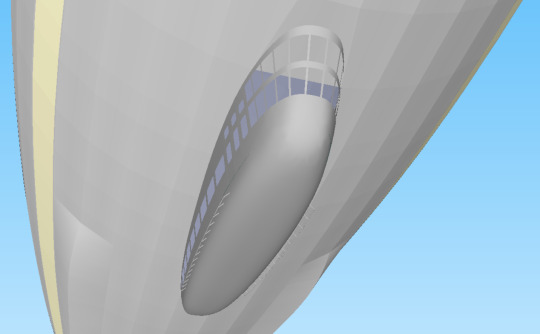

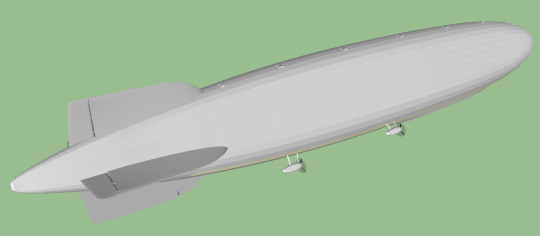

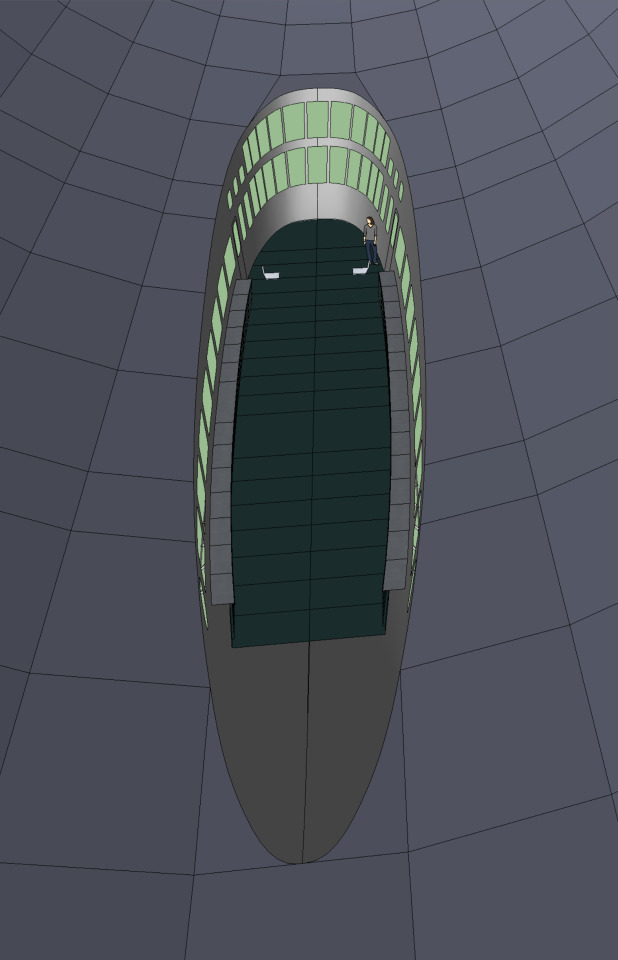
current progress on my airship. Added handlebars to the control gondola for the ground handling crews. The yellow stripes on the hull are strips of translucent cloth to light the keel catwalks, an idea taken from the USS Akron & Macon.
3 notes
·
View notes
Text
A Brief History of USS FORRESTAL
The FORRESTAL story began well before the ship herself was born. In the closing months of World War II, Admiral Mark Mitscher made the first recorded suggestion for an aircraft carrier with the general characteristics of the FORRESTAL class. On 12 July 1951, the Navy announced that Newport News Shipbuilding and Drydock Company had been awarded a contract to build CVA-59, the "Worlds First Super Aircraft Carrier." CVA-59 would be named FORRESTAL in honor of the late James Vincent Forrestal who served as Assistant Secretary of the Navy, Secretary of the Navy, and, finally, as the first Secretary of Defense. USS FORRESTAL’s nickname would be "First in Defense." The keel for this great ship was laid on 14 July 1952, and within 30 months USS FORRESTAL was launched. In 1952 USS FORRESTAL would be the largest vessel ever constructed. She would displace 60,000 tons, be 1,039 feet long, and have a flight deck width of 252 feet. From keel to mast she equaled the height of a twenty-five story building. Within her many decks she would carry the latest technologies and crew comforts. Her huge voids and compartments would hold more food, fuel, and stores than any other naval vessel. She is a sight to behold being the "World’s First Super Aircraft Carrier." Read the full history here https://ussforrestal.org/forrestal-history
#Forrestal History#USS Forrestal Association's Website#USS Forrestal Association Member#scholorship competetion#scholorship entry#forrestal latest news#uss forrestal shipmates#forrestal reunion#forrestal website
0 notes
Text

USS Lexington (CV-2): A mixture of air and aviation gasoline in her improperly drained aircraft fueling trunk lines (which ran from the keel tanks to her hangar deck) ignited, causing a series of explosions and fires that could not be controlled. Lexington was scuttled by an American destroyer during the evening of 8 May, 1942 to prevent her capture.
#USS Lexington (CV-2)#8 May 1942#explosion#fire#ship#flag#interior#USS LEXINGTON CV-16-Aircraft Carrier Museum-Corpus Christi#Texas#USA#original photography#anniversary#US history#wwII#world war II#Lady Lex#landmark#tourist attraction#summer 2011#vacation#travel#sank#Pacific War
0 notes




